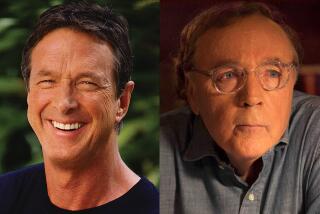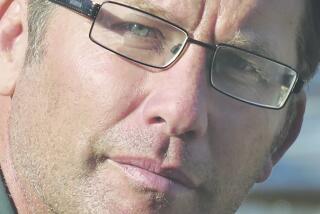The transformation of ‘Planet of the Apes,’ from book to movie legend
Let’s give credit where credit is due. It was screenwriter Rod Serling who came up with the stunning ending to the original “Planet of the Apes” movie, which opened in 1968.
You know the one: The character of Taylor, played with set-chewing panache by Charlton Heston, escapes on horseback from a simian encampment, only to discover, along a stretch of deserted beach, the Statue of Liberty protruding from the sand. “You maniacs,” he shrieks as he realizes, horribly, where he is. “You blew it up. Damn you. God damn you all to hell.”
The scene has long been a pop culture trope, key to Heston’s reinvention in the late 1960s and early ‘70s (“Soylent Green,” “The Omega Man”) as dystopian science fiction star.
But it’s also important because it represents the moment “Planet of the Apes” was reconfigured from the satire of Pierre Boulle’s 1963 novel “Monkey Planet” to a more pointed commentary on humanity’s propensity to self-destruct.
Such a notion has been central to nearly every “Planet of the Apes” installment since, including the newly released “Dawn of the Planet of the Apes,” which unfolds in and around a devastated San Francisco a decade after a laboratory-created virus wiped out 99% of the human race.
What makes “Planet of the Apes” so compelling, in other words, is that it is a future vision of our world.
Boulle’s novel, however, does not take place on Earth; its setting is a planet in the system of Betelgeuse. It also relies on an awkward framing device — two interstellar travelers, wife and husband, find floating in space a literal message in a bottle: a manuscript by a French journalist named Ulysse Merou describing his experiences on the monkey planet, where apes are technologically advanced, driving cars and flying airplanes, and humans live like animals.
Much of the action in the first film is encoded here: Boulle introduces the chimpanzees Zira and Cornelius and also gives us Dr. Zaius, the orangutan who represents the repressive faith of official science, threatened by the existence of a talking, thinking human being. There is even an archaeological dig, in which the traces of an earlier, nonsimian society are discovered, including a human doll that cries, “Papa.”
And yet, this is not Earth but a parallel world, and if Boulle’s novel does end with a twist, it has nothing to do with the one Serling created; rather, it predicts the concluding scene of the disappointing 2001 reboot, in which the astronaut Leo Davidson, played by Mark Wahlberg, returns to an Earth where, in his absence, apes have risen to the top of the evolutionary chain.
That makes for a delightful irony, it’s true. “He is a gorilla,” Merou declares, portentously, of the guard who greets his ship at a remarkably preserved Orly Airport (700 years have passed). At the same time it highlights a key problem with the novel, which is that the stakes remain too low.
Boulle is not particularly interested in fate or consequence. His book reads instead like a set-up for what is, in effect, an elaborate punch line.
Many science fiction novelists of the 1960s (Philip K. Dick, J.G. Ballard, Robert Silverberg, Ursula K. Le Guin) brought a social engagement to their writing. Yet “as talented and creative a man as Boulle is,” Serling observed in 1972, “he does not have the deftness of a science fiction writer. Boulle’s book was … a prolonged allegory about morality more than it was a stunning science fiction piece. But it contained within its structure a walloping science fiction idea.”
This is where the genius of Serling asserts itself, for he knew and respected science fiction on its own terms. In a 1998 piece for Creative Screenwriting, Gordon C. Webb makes that point by citing one of Serling’s early episodes of “The Twilight Zone,” in which an astronaut turns to savagery after crash landing on a planet that he realizes — too late — is actually Earth.
Whether or not this was the source of the ending Serling would later develop for “Planet of the Apes,” it illustrates what he (and, by extension, the makers of “Dawn of the Planet of the Apes”) understood: that we are complicit in what happens to us. It may be interesting to visit a planet where apes and not humans have become the dominant species, but when that planet is Earth, and the change is triggered by nuclear or environmental devastation, then the narrative takes on a much more personal resonance.
In the end, that’s the appeal of these stories, which have been part of our popular mythology for half a century. They remind us that we are here by the grace of nature, that we mess with the world at our own peril and that it is only our vanity (and our ability to destroy ourselves) that separates us from other animals.
“We were driving down a fairly broad street flanked with pavements,” Boulle writes, describing Merou’s first encounter with the simian city. “I anxiously examined the passers-by: they were apes. I saw a tradesman, a sort of grocer, who had just raised the shutters of his shop, turn around curiously to watch us go by; he was an ape. I tried to see the passengers and drivers of the motor cars flashing past us: they were dressed in the same way as people at home and they were apes. ... My hope of discovering a civilized human race became chimerical, and I spend the last part of the drive in gloomy despair.”
Twitter: @davidulin
More to Read
Sign up for our Book Club newsletter
Get the latest news, events and more from the Los Angeles Times Book Club, and help us get L.A. reading and talking.
You may occasionally receive promotional content from the Los Angeles Times.








